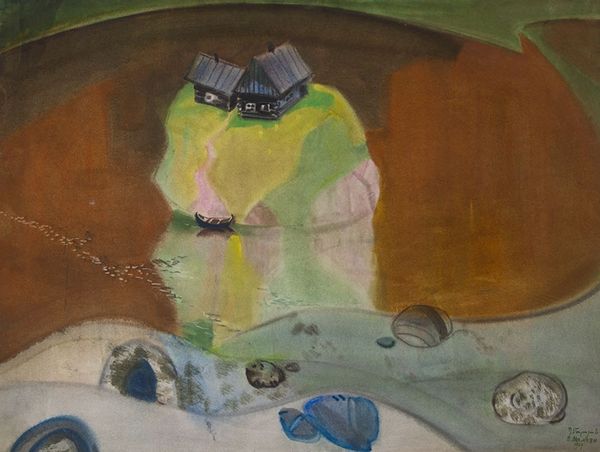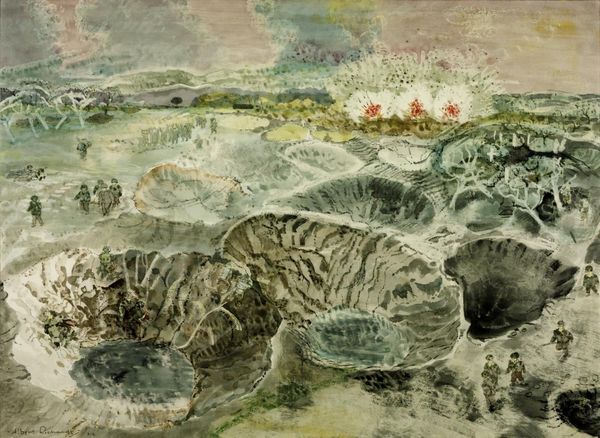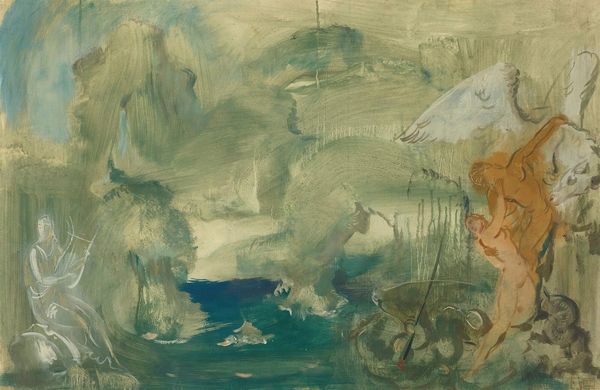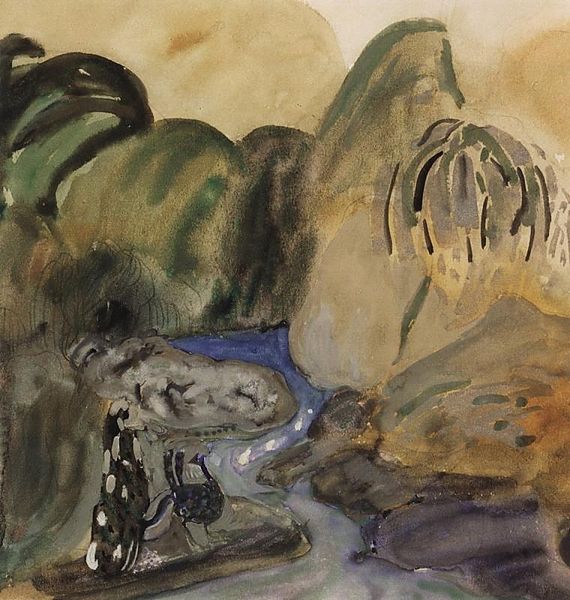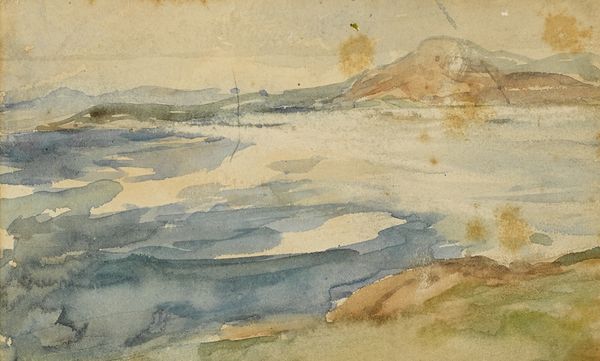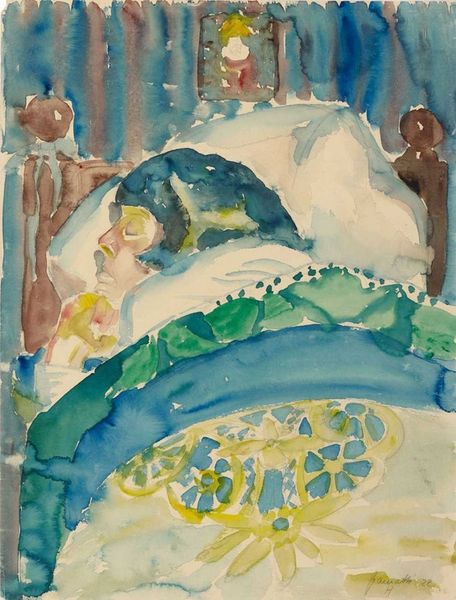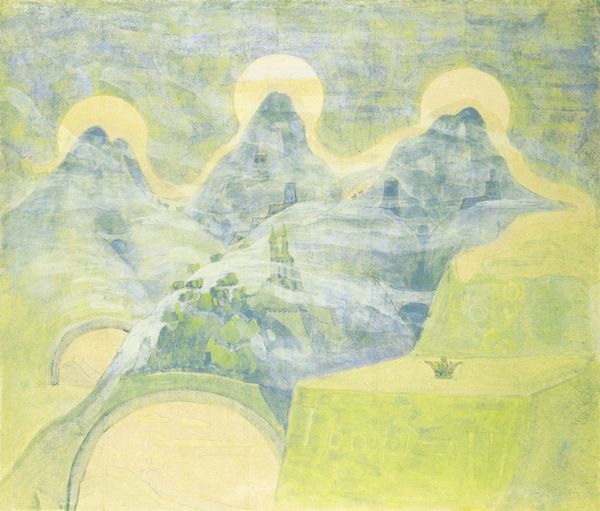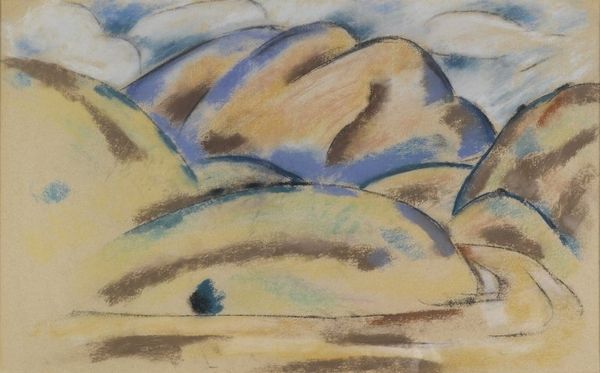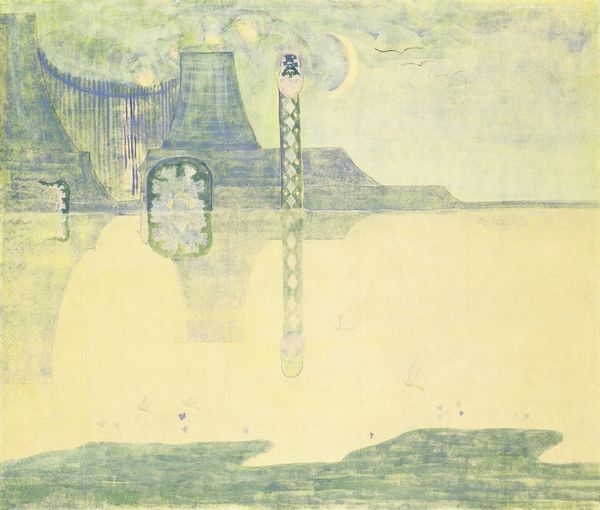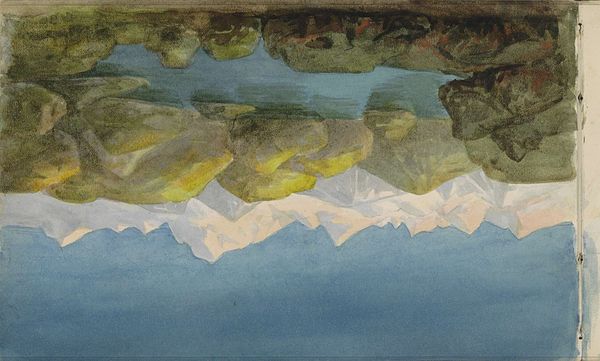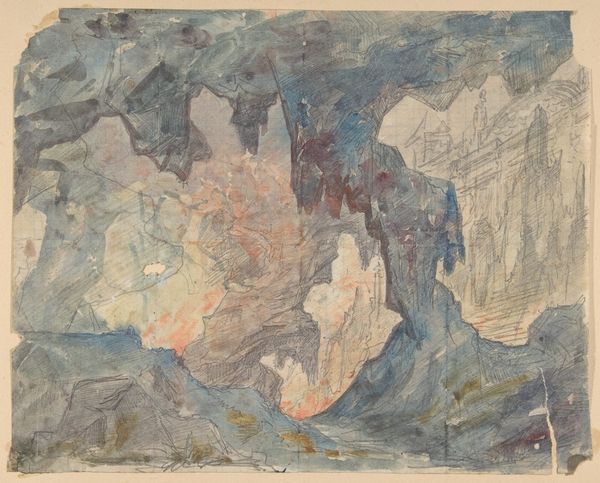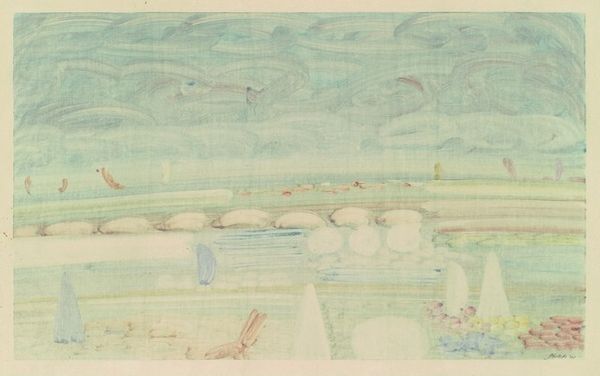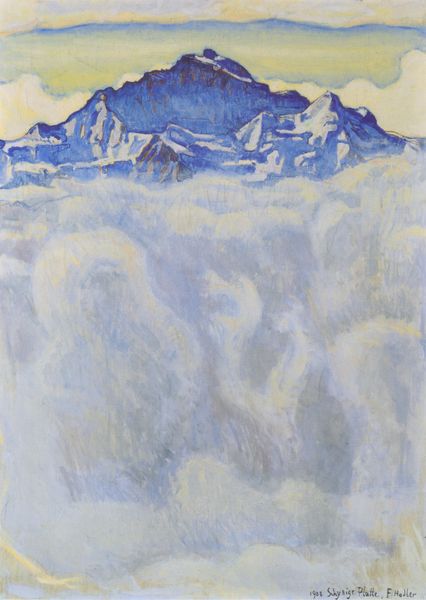
painting, watercolor
#
painting
#
landscape
#
watercolor
#
cityscape
#
watercolour illustration
#
realism
Copyright: Petros Malayan,Fair Use
Curator: Right now we’re looking at “Karelia Fairytale,” a 1969 watercolor by Petros Malayan. What strikes you about it? Editor: It feels… distant, somehow. Both in the sense of the aerial perspective, making us feel like we are far away, but also in terms of affect; the muted colours give it a removed, almost melancholy feel. Curator: Considering that it was painted in 1969, during a time when socialist realism was favored, one has to look at how the very materials and Malayan’s specific way of applying watercolor shape its socio-political context. Watercolor lends itself to transparency, creating a dreamlike representation, far from the bold proclamations of social realism painting. Editor: I agree. Viewing it through that lens makes sense. Watercolors during this time allowed for a quieter, more intimate form of expression, but let's also remember its historical setting, the actual landscape itself. Karelia, with its complex history as a region contested between Finland and Russia. So is this a political statement, a reflection on the changing identities? Curator: Good point. And watercolor has a fascinating materiality that speaks to temporality. The delicate, translucent pigments remind us of the ephemerality of landscapes themselves; in a way, the labor needed to create that effect runs completely counter to more bombastic techniques. Think about the slow, painstaking accumulation of washes against propaganda images intended for rapid consumption! Editor: And the very act of rendering this place. The positioning of these small wooden buildings, perched on the hilly island surrounded by water. I am curious about the society that inhabited that island: their traditions and how their culture became part of Russia. Is this his romantic interpretation, the artist perhaps pointing to the fragility of culture in the face of an increasingly dominant Soviet aesthetic? Curator: Indeed, that speaks to how the watercolor acts as a carrier of social commentary, through its sheer contrast to prevalent forms of state-approved art and, also, to how this painting can make us reflect on power structures when art production is at stake. Editor: Ultimately, this is a quiet subversion and Malayan's work provokes reflections on cultural identity and political power through, not despite, his chosen materials. Curator: Precisely! It's the subtext that matters; the politics embedded within the pigment.
Comments
No comments
Be the first to comment and join the conversation on the ultimate creative platform.
